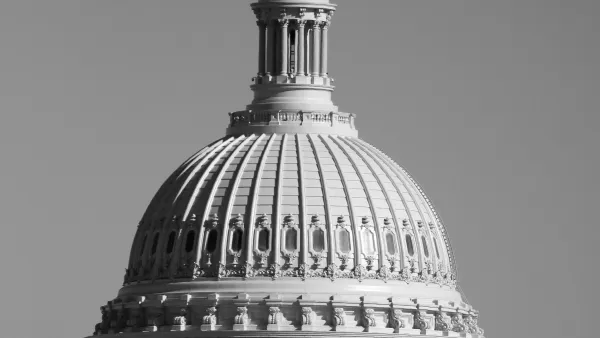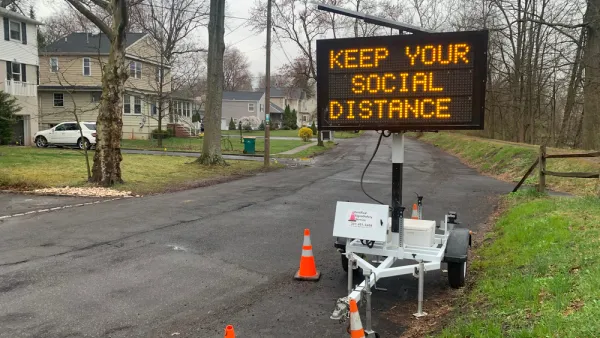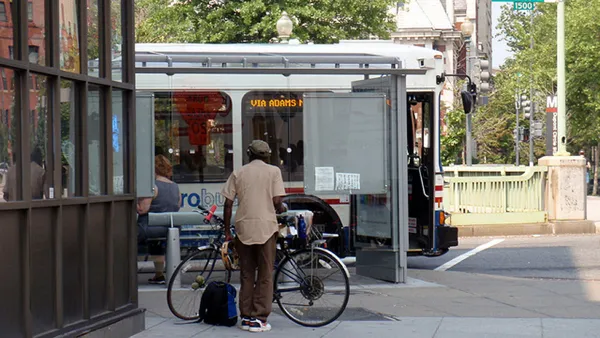Amanda Kolson Hurley surveys the innovative architecture and urban planning transforming America's notoriously stodgy capital into a model of progressive urbanism.
When one thinks of D.C.'s built environment, the first thing to come to mind isn't likely daring architecture or cutting-edge planning. At least partly due to its restrictive zoning and tradition of classically inspired architecture, Washington has long been considered, "one of the most traditional and risk-averse cities in the country," writes Hurley. But a number of recent and planned projects from world-renowned architecture and planning firms are poised to set the city on a different course.
Not surprisingly, in a city that serves as the seat of the federal government and a cornucopia of public institutions, Hurley credits public leadership (and the projects they've commissioned) with facilitating the city's change of ethos.
One example of such leadership is the recently unveiled Sustainable DC effort. "For years, city leaders have been working to shape a different
Washington: dense, diverse, green, and wholly urban in a way that the
Washington of the 1980s and early 1990s-starkly divided by income and
race, and bereft of people downtown after office hours-wasn't. In April,
Mayor Gray unveiled what may be the signature initiative of his
administration, Sustainable DC, which aims to make D.C. the greenest
city in the United States over the next 20 years....Much of the vision
behind Sustainable D.C. comes from Harriet Tregoning, the rock-star
planning director and a founder of the Smart Growth movement."
"The district leadership has actively engaged in urban improvements,
despite the oddness of having all these multiple jurisdictions in
control," says Lionel Lynch, head of the new D.C. office of HR&A Advisors. "They've tried to make sure there's a quality
public realm. You definitely feel that the District is getting its own
identity, or that it's becoming a lot more dominant over the federal
government, in a way that is self-reinforcing."
FULL STORY: Feature> A New Morning in Washington

Analysis: Cybertruck Fatality Rate Far Exceeds That of Ford Pinto
The Tesla Cybertruck was recalled seven times last year.

National Parks Layoffs Will Cause Communities to Lose Billions
Thousands of essential park workers were laid off this week, just before the busy spring break season.

Retro-silient?: America’s First “Eco-burb,” The Woodlands Turns 50
A master-planned community north of Houston offers lessons on green infrastructure and resilient design, but falls short of its founder’s lofty affordability and walkability goals.

Test News Post 1
This is a summary

Analysis: Cybertruck Fatality Rate Far Exceeds That of Ford Pinto
The Tesla Cybertruck was recalled seven times last year.

Test News Headline 46
Test for the image on the front page.
Urban Design for Planners 1: Software Tools
This six-course series explores essential urban design concepts using open source software and equips planners with the tools they need to participate fully in the urban design process.
Planning for Universal Design
Learn the tools for implementing Universal Design in planning regulations.
EMC Planning Group, Inc.
Planetizen
Planetizen
Mpact (formerly Rail~Volution)
Great Falls Development Authority, Inc.
HUDs Office of Policy Development and Research
NYU Wagner Graduate School of Public Service




























